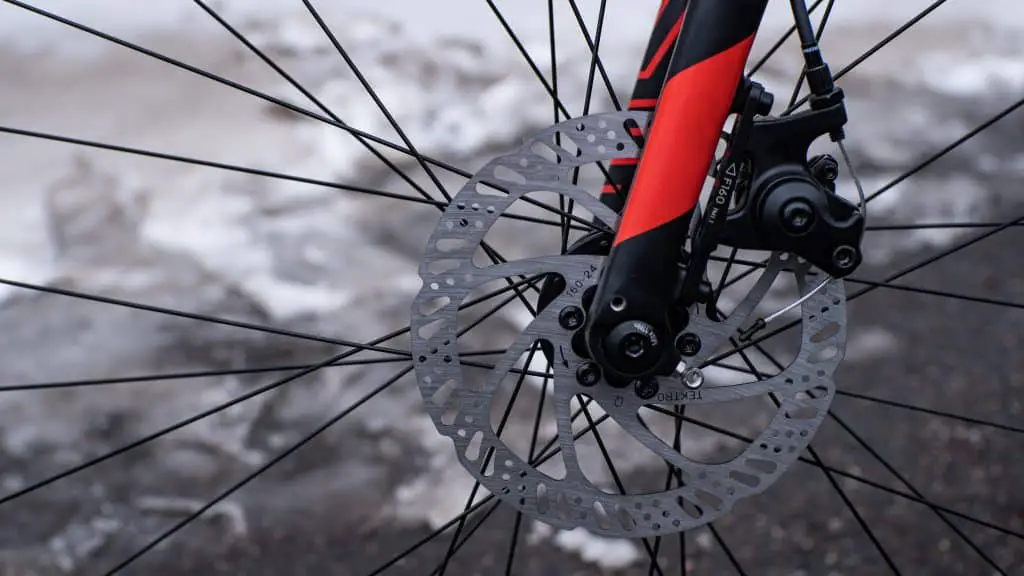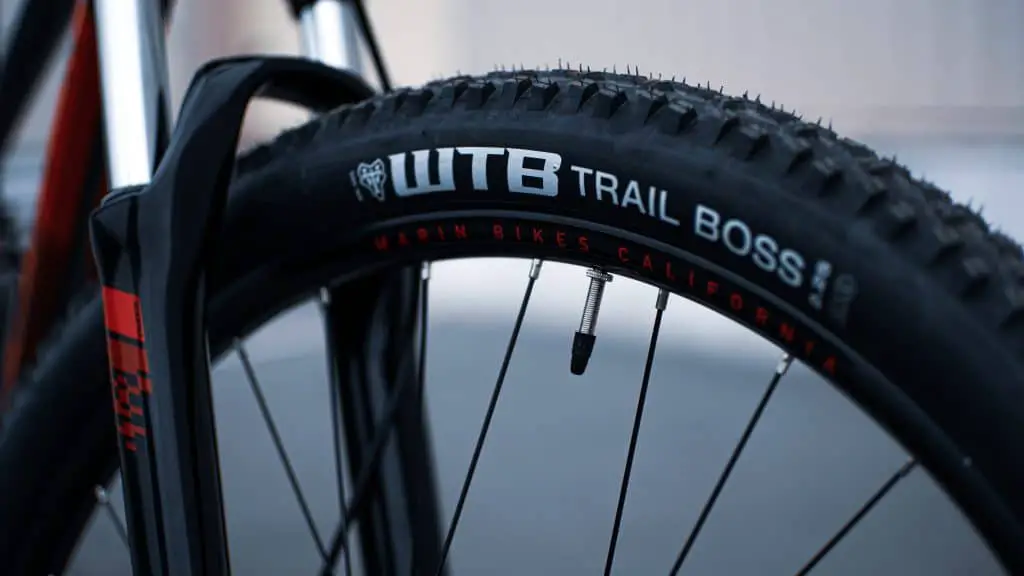Last Updated on March 18, 2022
Mountain biking is a sport for adventurous people where you test the capabilities and limits of yourself and your bicycle.
You go through seemingly impassable trails with huge boulders, tight and narrow sections in the heart of the jungle, and jump large gaps with a flowing stream or river underneath.
All this is part of the sport of mountain biking.
And with it comes the influx of new technologies on mountain biking components. One of which are carbon rims.
But are these a great choice if you’re into mountain biking, knowing that they’re more expensive and have a tendency to break upon impact?
These are some of the questions we’ll be answering in this article as we’ll help you decide whether it’s smart to use carbon rims on your mountain bike.
MTB Carbon Rims vs Alloy Rims

Weight
Carbon fiber is becoming popular today in mountain biking because of its high strength-to-weight ratio.
Its density is even just half of aluminum and it is over five times less dense compared to steel. However, it’s way stronger than metal and is much lighter. This is the reason why many people are choosing carbon wheels against alloy ones.
Note that the wheels which include your tires are the ones making up your bike’s rotating weight. Having a high rotating weight makes it easier for your bike to increase inertia.
This is a very important aspect to consider in cycling because riders need enough energy to overcome the obstacles and use them to accelerate themselves. This means that you need to exert more energy if you have heavier wheels.
Carbon wheels are lightweight, which makes your bike feel snappier and much easier to accelerate. You can easily climb uphills and save a lot of energy on long-distance cross-country rides.
Carbon wheels are the preferred choice for professional XC racing because the focus of riders is on saving weight so they can go faster and easier on climbs and long rides.
Stiffness
Carbon rims are stiffer compared to their alloy counterparts. Stiffness means that your bike feels snappy because your rims won’t flex.
Carbon fiber is a revolutionary technology because it can be easily designed to accommodate certain specifications just like in cycling. What’s happening in a carbon wheelset is that it combines vertical compliance with lateral stiffness.
This means that you can easily maneuver your bike the way you want it. It’s just like you won’t feel any lag whenever you’re turning on tight corners or riding through technical sections.
What’s more is that carbon wheels are also better in absorbing vibrations from the ground because of their stiffness. This makes your ride much more comfortable and also safer.
Durability
Durability is a major factor to consider when it comes to mountain bike components. And it is this factor that makes it a bit trickier to choose between carbon and aluminum wheels.
What you’ll most likely encounter are discussions saying that carbon wheels are very fragile and that they’re not that durable compared to alloy rims.
Well, that’s not entirely true because carbon’s strength-to-weight ratio is much higher. Theoretically speaking, carbon mountain bike wheels are stronger than aluminum rims especially if they both have the same weight.
The reason why many people think that carbon is weaker is that many riders just want to talk about it on social media.
Not to mention that those who can’t afford to buy a carbon rim just want to diss the latter as too fragile compared to the much cheaper alloy variants.
The fact is that carbon and aluminium rims can both fail under similar circumstances. However, the way they fail differs from one another. Aluminum alloy wheels can deform and get dents.
While carbon rims develop cracks because they are brittle and won’t deform in any way. And you can’t anymore use a cracked carbon rim.
This is why many people say that alloy wheels are more durable because you can still use them even if they’re damaged in the form of a dent or deformity.
However, even dented and deformed alloy wheels aren’t recommended for use because you can easily lose balance.
To make it easier for you to decide on, it’s better that you get rims that you can afford to replace if ever these are damaged. And in this case, aluminum seems to be the best option.
However, there are already a lot of premium carbon brands that offer warranties on their products so you can replace your carbon wheels without paying anything if they get damaged.
Price
The number one reason why people are afraid of carbon rim is the price. They are much more expensive compared to the alloy ones.
An example of this is Industry Nine Hydra carbon wheels worth around $800 to $1,000.
Compare that to DT Swiss EX511 aluminum rim which is just sitting at around $150 to $200. Expect the price to double if you’ll choose carbon over aluminum rims.
Are carbon rims better for racing than an aluminum wheel?

Yes, carbon wheelsets are the smart choice if you want to go racing. They are much lighter and are stiffer.
This means that you can have a faster acceleration time as well as find it easier to climb uphills and shred downhill descents faster because you don’t have to exert much effort. You get both an improved speed and maneuverability with a carbon wheel.
Conclusion
Carbon MTB rims are totally worth it for mountain biking especially if you are into racing because this improves your ride quality and performance.
You go faster, have better maneuverability, and gain more confidence in the trails. Although the downside is the expensive price, that’s alright knowing that you get a ton of performance upgrades.
Not to mention the comfort in knowing you won’t have to exert too much effort when pedaling.
